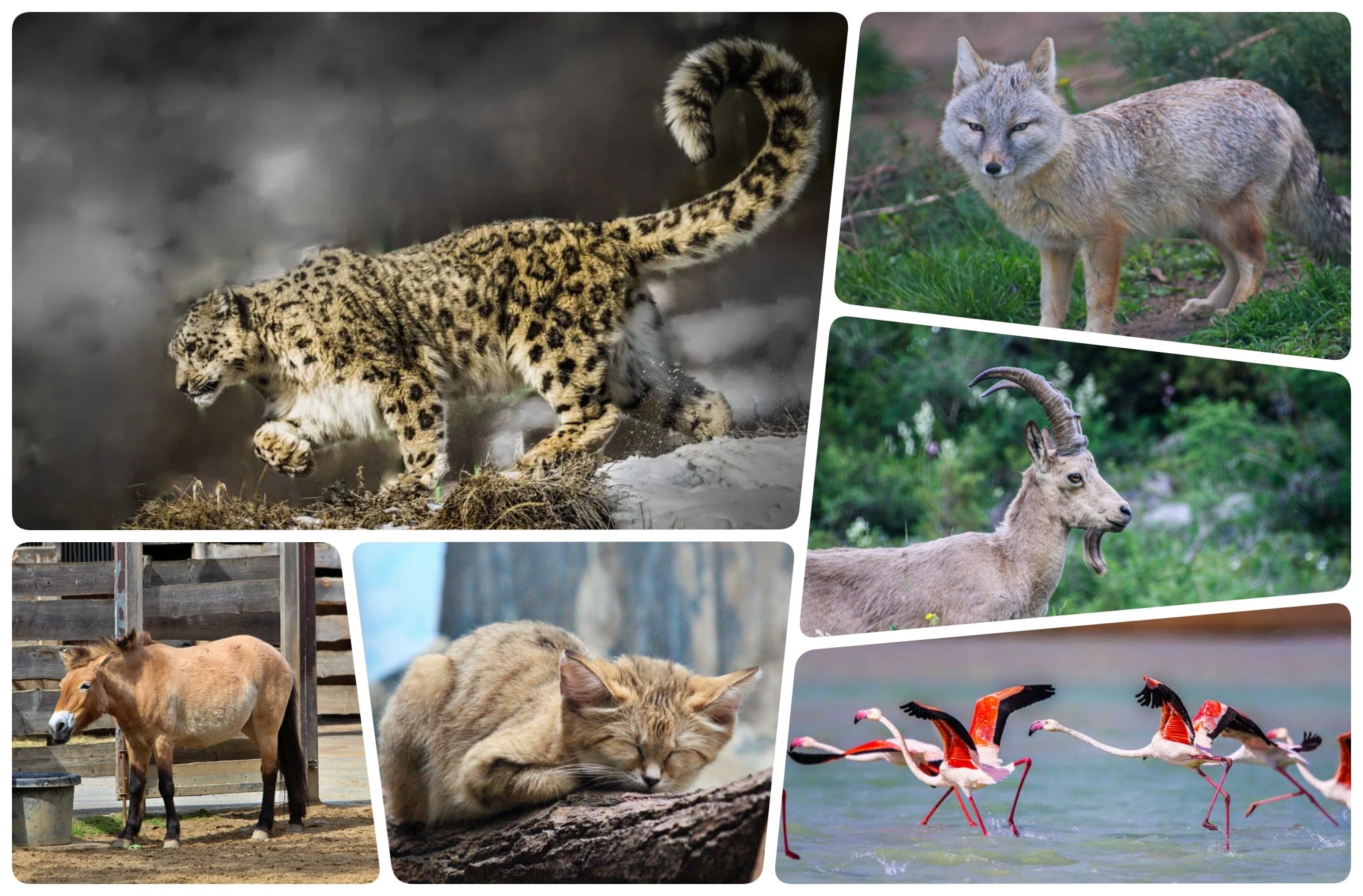Kazakhstan is 9th largest country in the world and offers incredible wildlife. We selected the most unique species of Kazakhstan’s animals.
Kulan (Equus hemionus kulan)
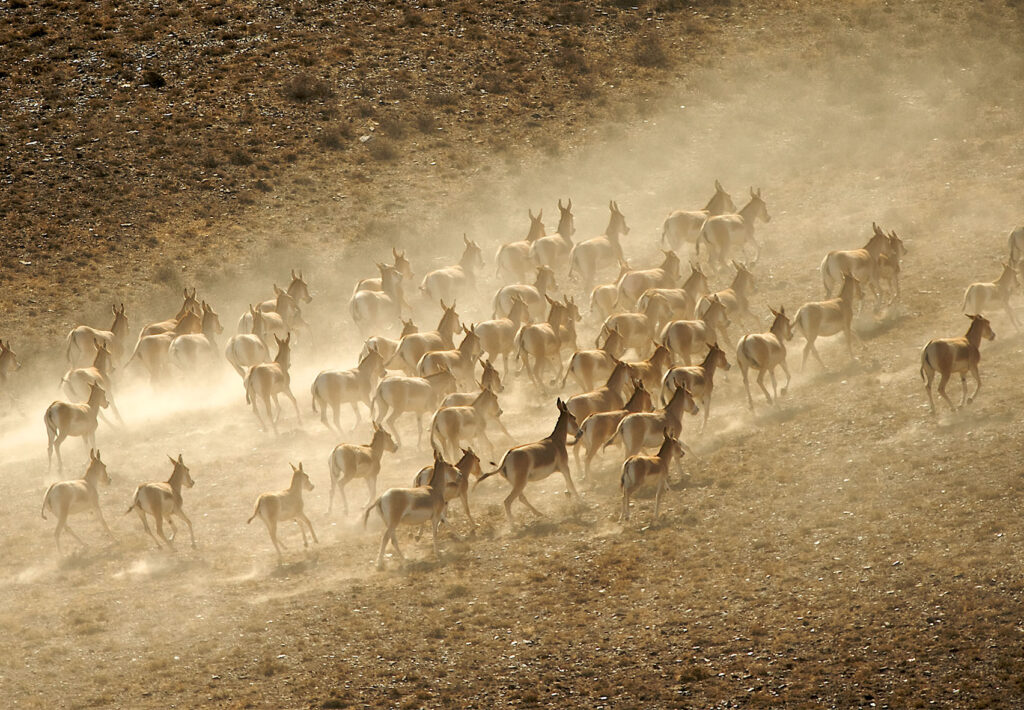
The Kulan is a subspecies of the Onager. They lived in the steppes of Kazakhstan, was extinct in the country in the 1930ies and was reintroduces in the Barsa-Kelmes Nature Reserve and Altyn Emel National Parkin in the last decades. Today living around 4,000 kulans in Kazakhstan. The Kulan is around 200 till 250 cm long. The height to the shoulders is around 120 cm. The weights of male Kulan’s differ between 200 till 240 kg. The males are very often larger than the mares. There diet includes herbs, shrubbery and plants. After a gestation period of about a year, the mare gives birth to a single foal, which stays with her mother for the first two years of life.
Manul (Felis manul)
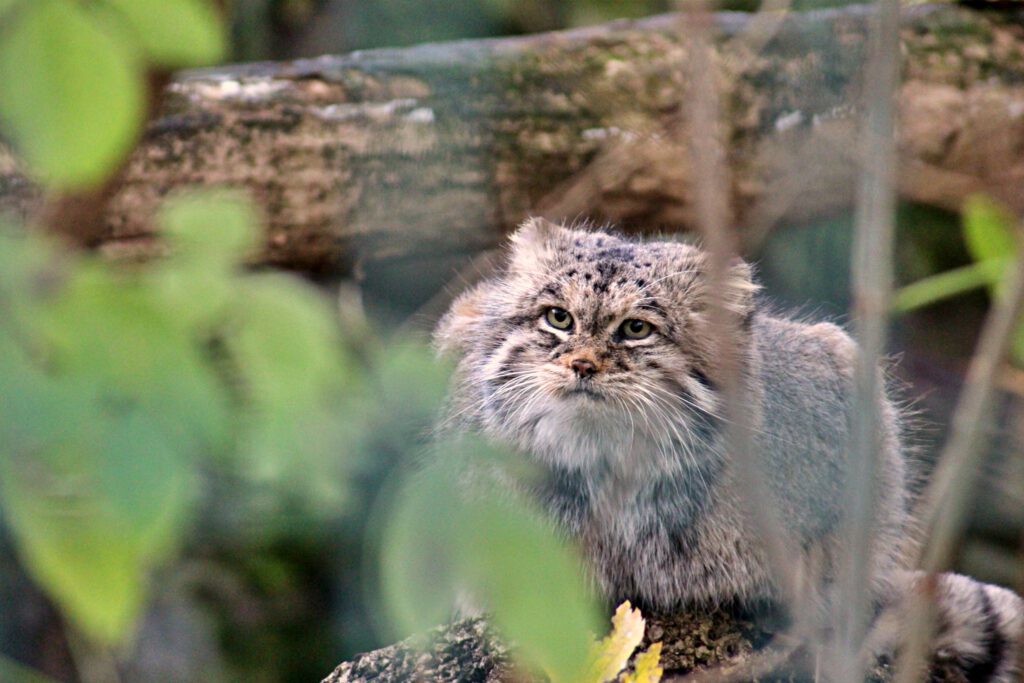
The Manul, also called Pallas’s cat, occurs in Central Asia, especially in the Mongolian – but also in Kazakhstan in Altai region, and can be found at altitudes of 5000 meters. The dense fur protects against cold and snow. The species is primarily threatened by the loss of its food source, since the main prey animals, rabbits and marmots, are heavily hunted and also poisoned. The gestation period lasts about 65 days and two to six young are born. The Manul is predominantly nocturnal and a loner.
Snow Leopard (Panthera uncia)
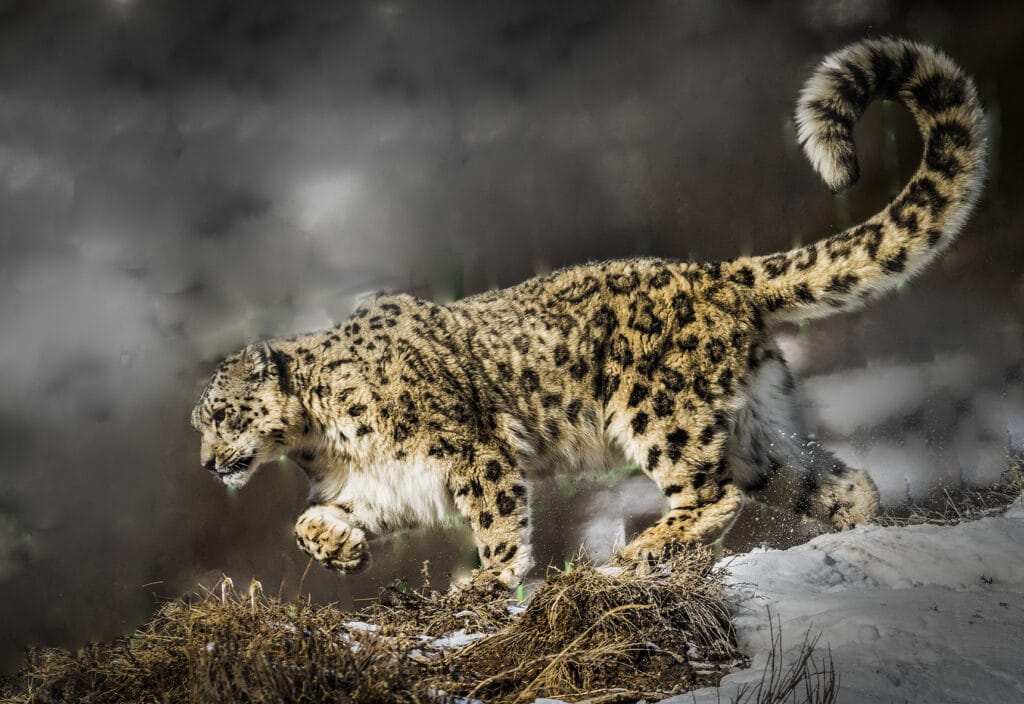
The Snow Leopard is the ghost of the mountains Kazakhstan. These big cats have a length of around 80 till 130 cm and a tail of around 90 cm and a shoulder height of around 60 cm. They use there tail to cover nose and head during sleeping in cold nights and to jump, balance out, run and walk through tricky rocky and often snowy terrain in the mountains 2,500 till 4,500 meters altitude. The weight of the males are around 50 kg and the female leopards have a weight of around 40 kg. Snow Leopards are on the Red List and only less than 10,000 leopards are alive world-wide and around 150 leopards in Kazakhstan. So you are a lucky guy if you meet this wild cats in the nature.
Greater Flamingo (Phoenicopterus roseus)
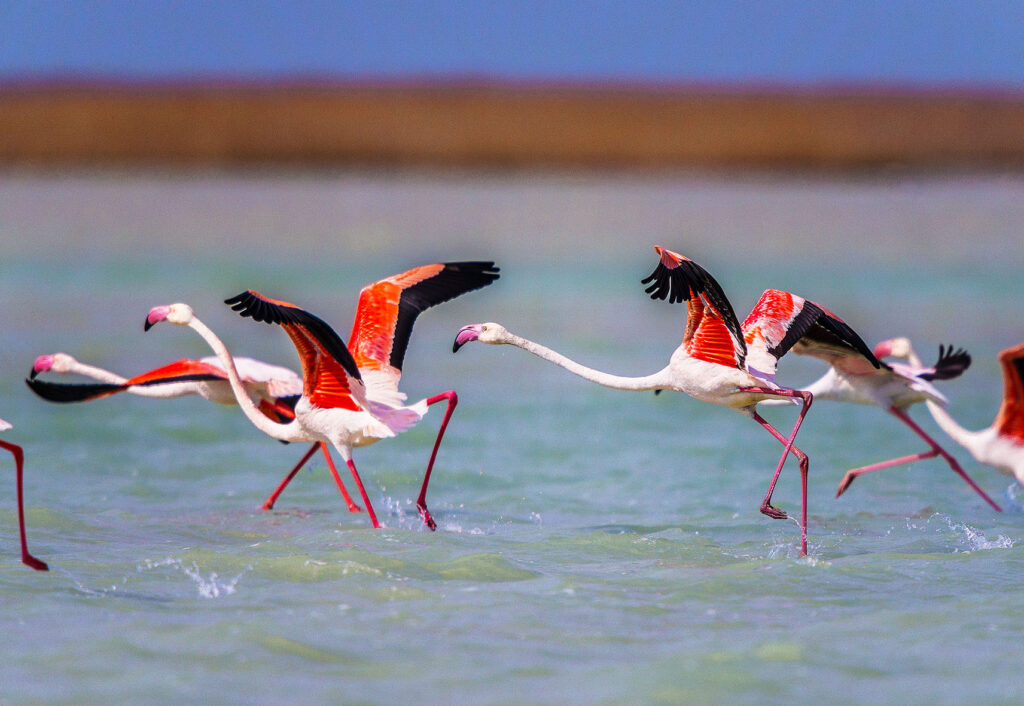
Greater Flamingos are thermophilic waterfowl with a unique beak. This is bent downwards at its tip and has fine horn lamellae on the inside. The animals swish it upside down in the water, filtering their food from the burrowing water. With the feed you also absorb dyes that are important for the pink-red plumage color. The sexes of Greater Flamingos do not differ in color, the males are slightly larger than the females. This beautiful birds living in lakes around the capital of Kazakhstan in summer. The lakes are frozen and the temperatures are very low in winter – so the Greater Flamingos flying to Mangystau region of Kazakhstan to the shores of the Caspian Sea in autumn to survive the cold winter.
Sibirian Ibex
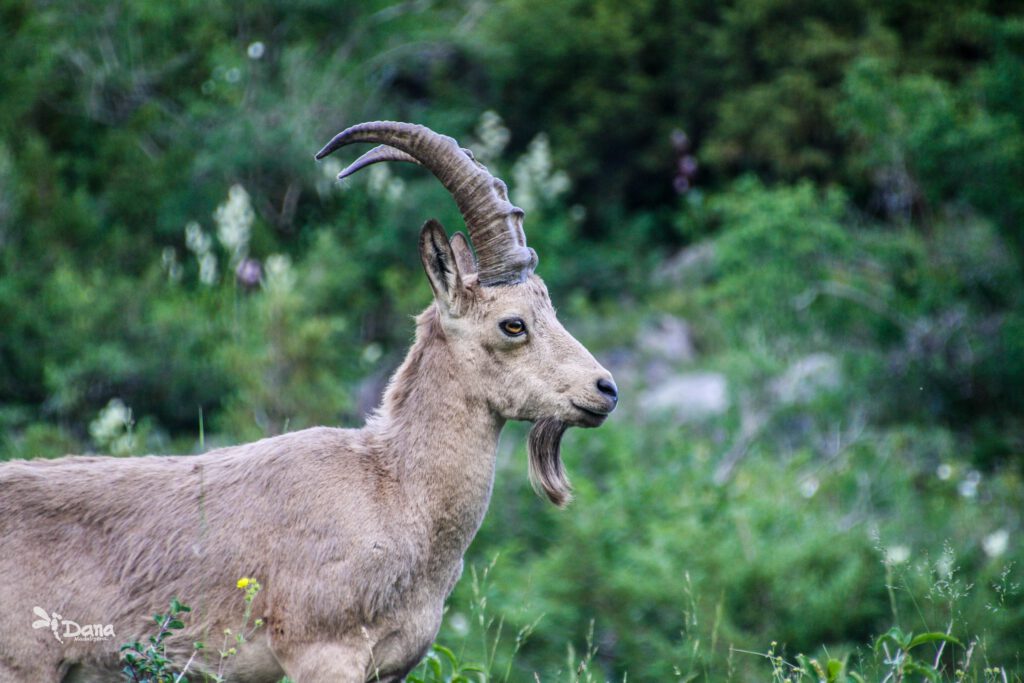
The Sibirian Ibex with his long horns is also a impressive animal and you can find it in the wild nature in Kazakhstan. The Ibex males have a shoulder height of around 90 cm and a weight up to 130 kg. The female animals are smaller with a height of around 75 cm and weights up to 56 kg. The horn of the males is growing up to 115 cm – but in some cases the Sibirian Ibex horn is getting impressive 150 cm long! The Sibirian Ibex likes to eat herbes and alpine grass and lives in summer mostly above the tree line. Only in some days they going down to salt licks to get important minerals. During the winter time they crossing the tree line to an lower altitude but preferring still meadows instead of forests. Siberian Ibexes are good climber and love to discover the rocky terrain in the Tian Shan and Altai mountains.
Menzbier’s marmots
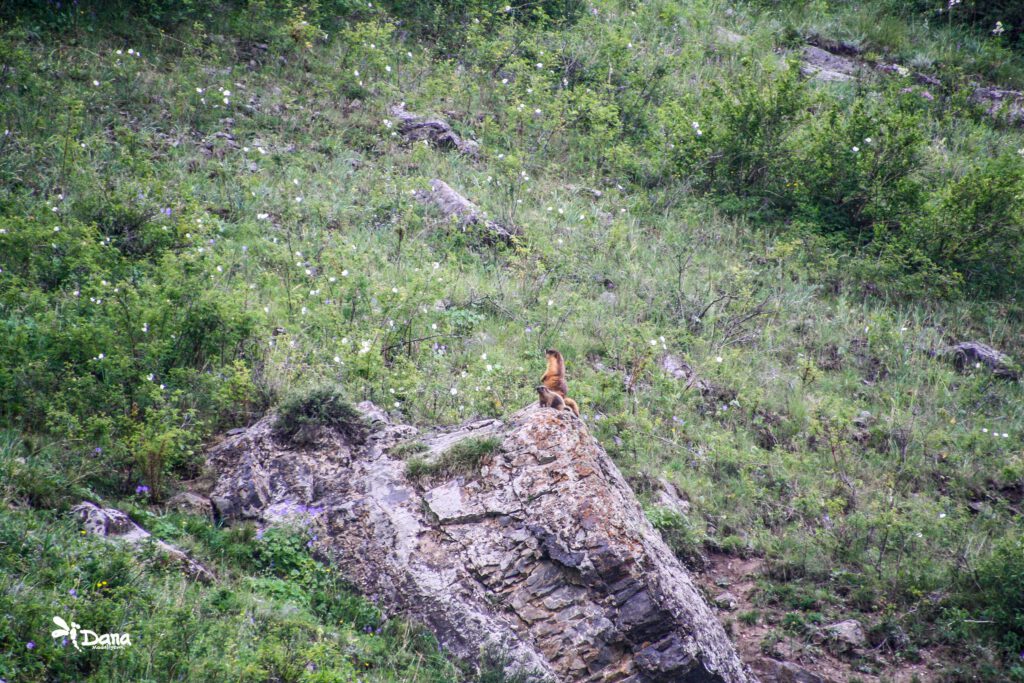
The Marmots are cute brown small animals and very often you can hear them already from far away when they whistle very loud in the mountain valleys of the Sairam-Ugam National Park. The marmots of the Western Tian Shan Mountains are Menzbier’s marmots and the population of this marmots is around 23,000 in Kazakhstan. The Menzbier’s marmots are the smallest species of marmots and has just a length of up to 50 cm and a weight of up to 5 kg. You have a good chance to watch in the green meadows of altitudes of 2,000–3,600 m above sea level this small animals during May till September because they sleeping during winter time in the underground. The marmots eating plants and like especially young, juicy shoots which growing on the meadows close to snow fields in the Tian Shan Mountains.
Himalayan brown bear (Ursus arctos isabellinus)
The Himalayan brown bear is a subspecies of the brown bear. He lives in the foothills of the Tian Shan mountains and Altai in Kazakhstan. Some guides reported bear droppings in Sayram-Ugam National Park in the last few years. But the number of animals living in the wild is still unknown. It is believed that the bear is the catalyst for the Yeti mythology in the Himalayan region because they walking or standing sometimes on two legs. People could believe – from a distance – that the bear looks like a huge hairy and wild human.
Its fur has reddish-brown color or sand color. The sizes between male and female Himalayan bears is very different. The male becomes 1.5 to 2.2 meters long, while the female just reaches sizes between 1.4 and 1.8 meters. The bears going into hibernation between October and April till May and sleeping in self-made caves.
The Himalayan brown bear is a omnivore and likes to eat grasses, roots and other plants, as well as insects and mammals like birds, sheep or goats.
Corsac fox (Renard corsac)
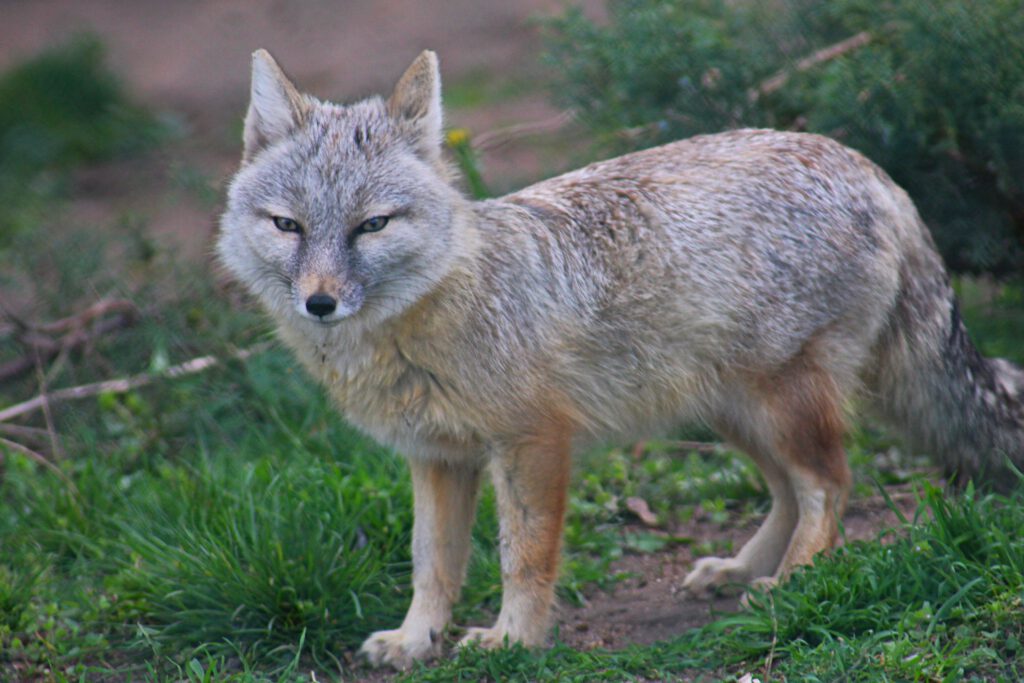
The rather dainty-looking Corsac foxes are the Kings of the Kazakhstans steppe and semi-deserts. Due to their distribution areas, steppe foxes are very well adapted to extreme weather conditions: They can survive the very cold winters and also the drought and heat in the summer of the Kazakh steppe. The soft and silky-looking winter coat of the Corsac fox is often fatal to the species: hunters catching and killing the animals because of their fur.
Sand cat (felis margarita thinobia)
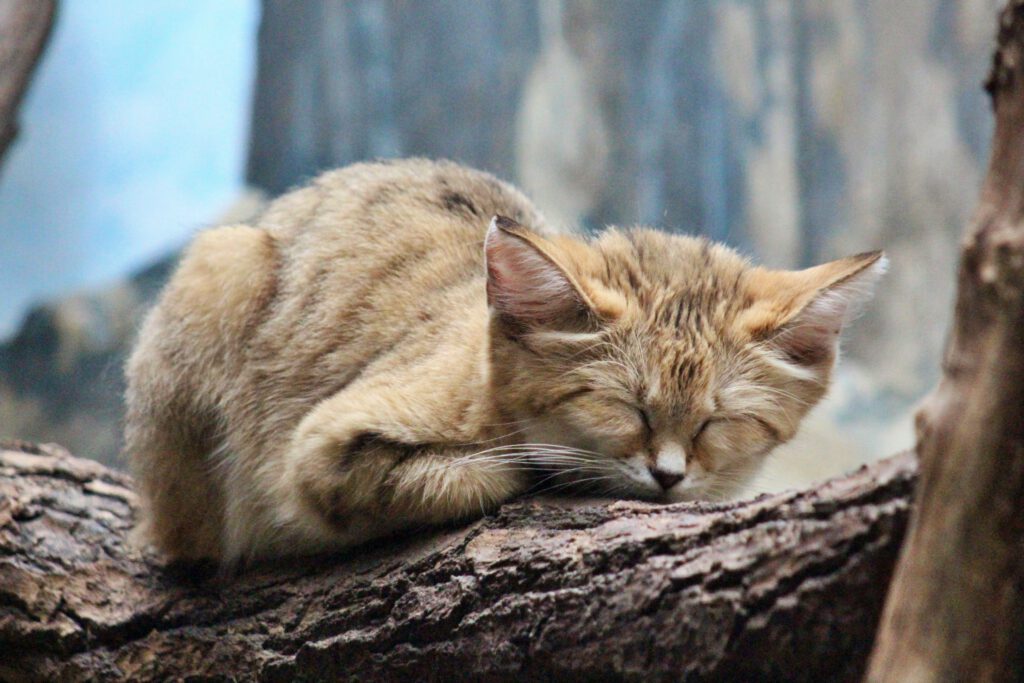
The sand cat can be found in the sandy desert regions between Kazakhstan’s and Uzbekistan’s border. The sun can heat up the sand up to 80°C and at night and winter it can be a freezing could with temperatures below -25°C. The Sand cats is well prepared for this harsh environment and have a very thick, matted fur on their paws that prevents direct contact with the sandy ground. While the sand cat’s fur may look pretty to us it is actually extremely practical for life in the desert. The colours are a good camouflage and blend in well with the cat’s environment, keeping them well hidden. Their outer ears have long hairs that stop fine grains of sand from getting into the ear canal. The outer ears make there head smaller and enable them to hide easier in the flat desert. The Sand cats in Central Asia are omnivores. Their diet are rodents, birds, reptiles, insects and eggs. The cats can run as fast as 40 km/h to catch their prey or escape out of dangerous situations. They yap loudly like little dogs during mating time in Mid March till mid May to find the right partner. Around 60 days later they born 3 till 5 children. The sand cats are very trusting and come close to humans as they have barely any natural predators.
Przewalski Horse (Equus przewalskii)
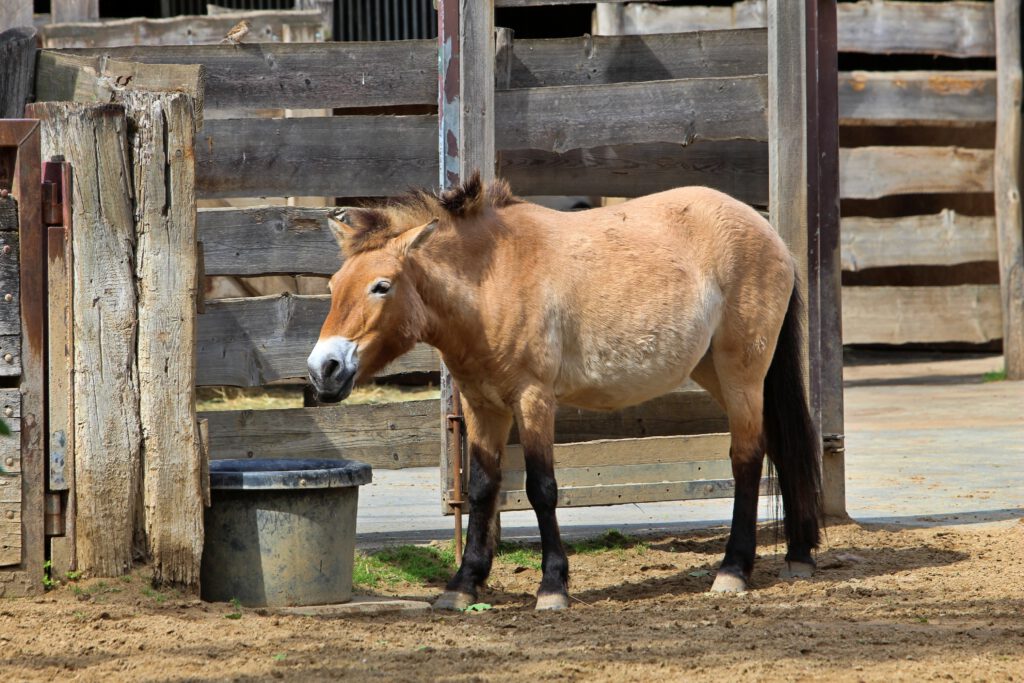
Another wild horse is living in the steppe and semi-desert of Altyn-Emel National Park in Kazakhstan. It is the Przewalski horse. It is the last truly remaining wild horse but they are not the ancestors of the domestic horses. Up until the late 18th century the Przewalski horse lived everywhere in the vast areas of the steppe of Eurasia. Illegal hunting and loss of habitat from agriculture and pressure from grazing domestic animals like domestic horses and cows led to a dramatic decline in the population of these wild horses. The last wild animal was seen in Mongolia in 1969. But this species had luck: Fifty-three Przewalski’s horses had survived in captivity however only twelve out of these animals turned out to be suitable for breeding. But the breeding was a success and the first reintroduction projects were initiated in China and Mongolia in the 1990s. A important role played the Prague Zoo who keeps the international stud book for the Przewalski horse. Four stallions and four mares from Munich Zoo was introduced to Altyn-Emel National Park in 2003 and the population is growing constantly since these days.
Get more information about Kazakhstan’s wildlife:



